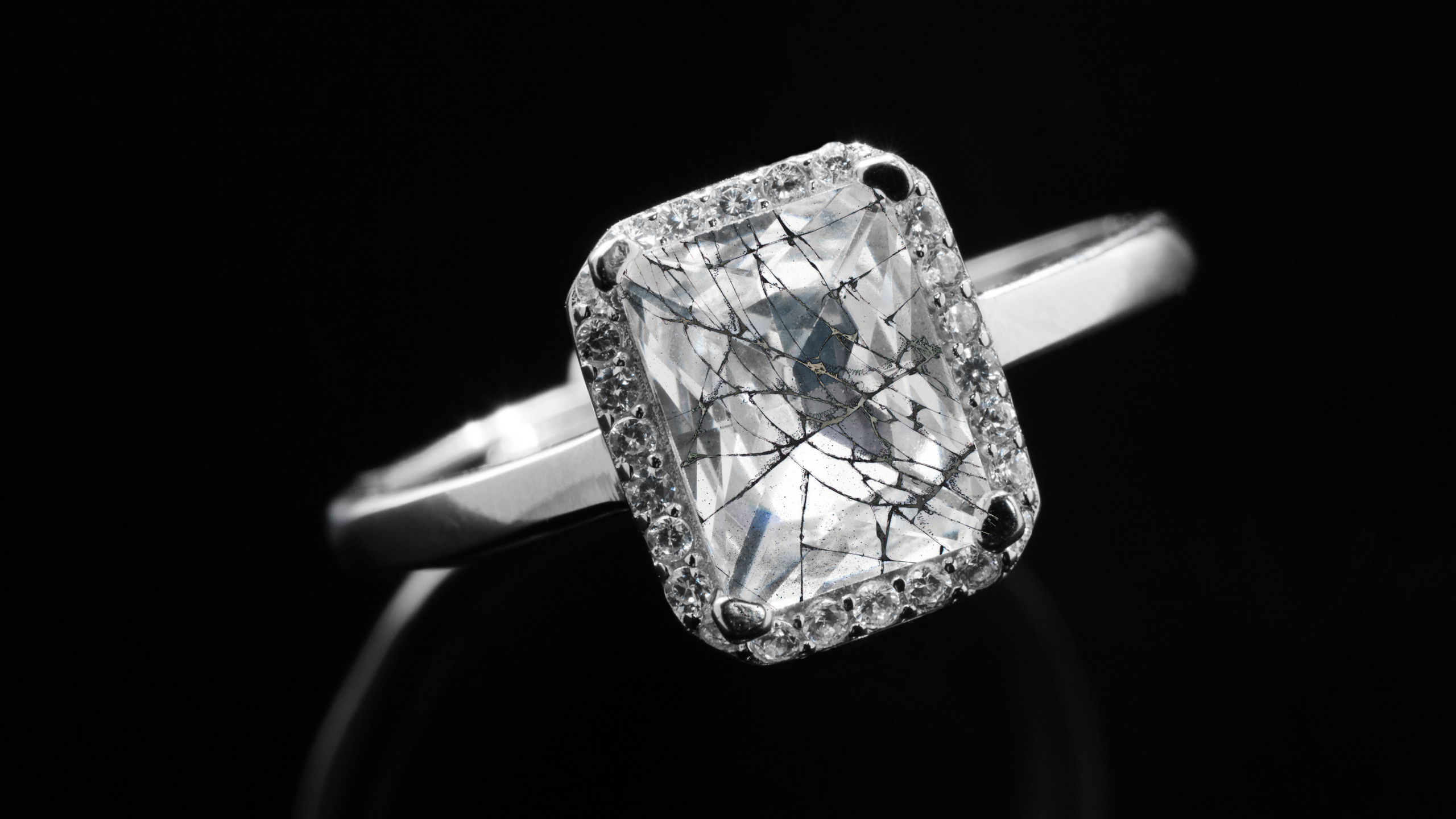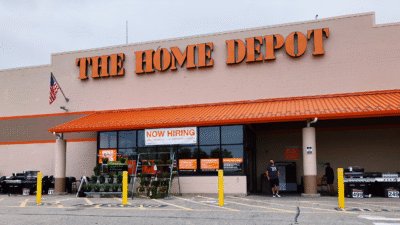The Natural Diamond Industry is Cracking Up
The diamond industry is undergoing a major shake-up. But can just how far can the bottom fall for the industry?

Sign up for smart news, insights, and analysis on the biggest financial stories of the day.
The diamond industry is undergoing a major shake-up. The traditional mined market faces precipitous pricing pressures from the rise of lab-grown gems, and geopolitical tensions threaten to bottleneck the global supply chain. De Beers, a 136-year-old progenitor of the industry and one of the world’s biggest diamond suppliers, has been jettisoned by its owner Anglo American.
If any sector should be able to withstand a little pressure, it’s diamonds — but the current storm could permanently change the industry. The big question is: Will the bottom fall out so hard that it shatters the incredible marketing feat that made diamonds so valuable in the first place?
“One thing is certain,” Ty Wilson, COO and co-founder at online jeweler CustomMade, told The Daily Upside, “the days of seeing a big diamond and assuming it cost tens of thousands of dollars are over.”
Marketing is a Diamond’s Best Friend
Chemically speaking, diamonds are 100% carbon. Commercially speaking, they’re 100% marketing. The iron grip that diamonds hold over the engagement ring market wasn’t forged until the late 1930s when De Beers — a British company founded by serial colonialist Cecil Rhodes in 1888 — employed a New York advertising agency NW Ayer to make diamonds the gold standard for engagement rings in the US.
That’s right — De Beers’ plan was to sell diamonds to Americans during the Great Depression. And it worked. Ayer ran a campaign with Hollywood’s Golden Era stars, draping celebrities in diamonds. Then in 1948, a copywriter came up with the slogan “A Diamond is Forever,” and Ayer even sent lecturers into high schools to instill in young girls that they shouldn’t accept anything less than a diamond from their future husband.
All of which shows that, from the outset, diamonds have been deeply bound by perception more than anything. Scarcity isn’t even a factor as diamonds aren’t that rare — the International Gem Society calls them “one of the most common gems.”
Those Darn Boys in the Lab
Lab-grown diamonds (LGDs) mark the biggest technological development in the diamond market in the last few decades. The first lab-grown diamond was made by GE in the 1950s, but it wasn’t exactly fit for a ring. It wasn’t until this century that processes for making lab-grown diamonds became efficient and cheap enough to sell them commercially.
Now though, lab-grown diamonds have arrived. Wilson said his company has seen a monumental shift towards LGDs. “We’ve seen our diamond sales go from 98% natural to 80% lab over the course of five years,” he said, although he noted that’s a more extreme shift than the broader market because the company specializes in online custom sales.
Customizability is one of LGDs advantages, and it’s something consumers seem to be increasingly looking for, Guy Cohen, CMO of jeweler Keyzar, told The Daily Upside. “Lab-grown diamonds offer a wide range of customization options, allowing consumers to choose from various shapes, sizes, and colors to suit their preferences,” said Keyzar.
But LGDs have a few other muscular selling points:
- Price point: LGDs are much cheaper than diamonds from the Earth. Wilson said prices have fallen to the point where LGDs are more than 80% cheaper than the “real” thing. (We say “real” because lab-grown diamonds are chemically and visually identical to their mined counterparts.)
- Ethics: The 1990s brought a heightened awareness of blood diamonds, i.e. gems mined in countries with civil conflicts where sales were used to fund war. The UN responded by creating the Kimberley Process to try to plug the flow of conflict diamonds into the global economy. However, human rights groups have said the pact is far from fool-proof, and modern diamond mining is still rife with human rights abuses including forced and child labor.
Jess Warch, co-founder and CEO of lab-grown jeweler Kimaï, told The Daily Upside she thinks price is the bigger factor for consumers. “The ethical aspect is definitely important, but we also believe that pricing motivates people to make the shift faster,” she said, adding: “Usually, sustainability comes at a premium, but with lab-grown diamonds, we’re able to have a more sustainable product at a cheaper price, which is a first.”
Dirty Diamonds: LGDs are seen as more environmentally friendly than natural gems, and for the most part they are — but there is a catch. Phil Preston, director at Clear Neutral, a startup that measures and certifies diamonds’ carbon footprint, told The Daily Upside that lab-grown diamonds use a phenomenal amount of energy. “It can be over 600 kg of CO2, which is equivalent to one month’s power consumption of a standard US household for a tiny 1-carat stone about 6.5mm across, about half the size of your pinky fingernail.” If all that energy came from renewable sources this wouldn’t be so bad, but the global diamond industry isn’t set up that way. “The majority of stones are made in India and China, where the energy grid mix is predominantly coal-powered,” Preston said.
Although mined gems individually eat up less electricity, they are still generally worse for the environment, Preston added. “When compared against the spectrum of environmental impacts; air pollution […] water pollution, soil degradation, habitat destruction, community impact, noise, waste etc, lab-grown diamonds perform far better,” he said.
Hidden (Sanctioned) Gems
The commercial threat of LGDs is just one of a trio of problems assailing the natural diamond industry. The second is that, while De Beers churns out a massive chunk of the world’s supply, Russia churns out even more. Russia’s Alrosa is the world’s biggest diamond supplier, and it’s undergone intense geopolitical scrutiny because, despite sanctions, it’s difficult to filch Russian diamonds out of the supply chain.
After a diamond is hewn out of the earth, it’s shipped off to be cut and polished — a process that predominantly happens in India. The provenance of those diamonds essentially vanishes at that stage — and the G7 has been trying to crack down on this link in the supply chain, looking for ways to better identify Russian gems and block them from flowing invisibly into the supply. “The Western sanctions on Russian diamonds will likely, at least, result in some supply bottlenecks,” Paul Ziminsky, a New York-based independent diamond industry analyst, told The Daily Upside.
On top of the looming unavailability of Russian diamonds, the diamond industry is facing intense demand whiplash. In 2020, consumers stuck at home splashed out wildly on diamonds as a form of retail therapy, but that demand has dried up considerably — so much so that both De Beers and Alrosa temporarily stopped selling in late 2023 to keep the supply-demand imbalance from getting completely out of hand. Diamond prices have now fallen 30% since peaking in 2022.
Consumer Crystal Ball-Gazing
None of the experts The Daily Upside spoke to think natural diamonds will be driven to total extinction, although some think they may wind up as a more niche product than their lab-grown counterparts. It’s impossible to be certain though, because the history of diamonds has shown that their value can be happily manipulated. “It’s not a practical or logical purchase for consumers. It’s an emotional purchase,” Ziminsky said. “The industry can drive its own demand through marketing campaigns, creating allure, etc. With other commodities, like copper or iron ore, it wouldn’t work like that,” he added.
While some legacy companies have opened lab-grown subsidiaries — including De Beers, which owns lab-grown gem company Lightbox — others have stuck by natural gems. “Tiffany and Cartier only sell natural gemstones, including natural diamonds,” Ziminsky said.
Both Wilson and Warch said they believe the price point of LGDs will start to level out soon, though. “We believe the price of lab-grown diamonds will start to stabilize in the coming year as the industry brings more focus to them,” said Warch. Wilson said it’s also possible that with all the commotion in the diamond market, other gemstones like rubies and sapphires may rise to prominence on engagement rings.











